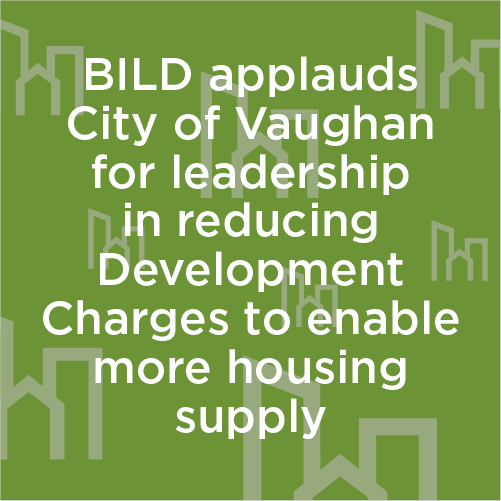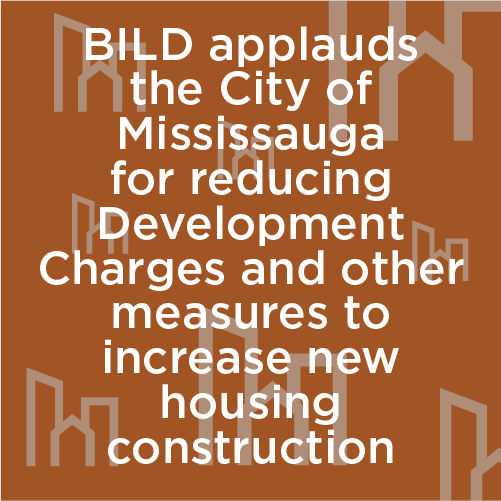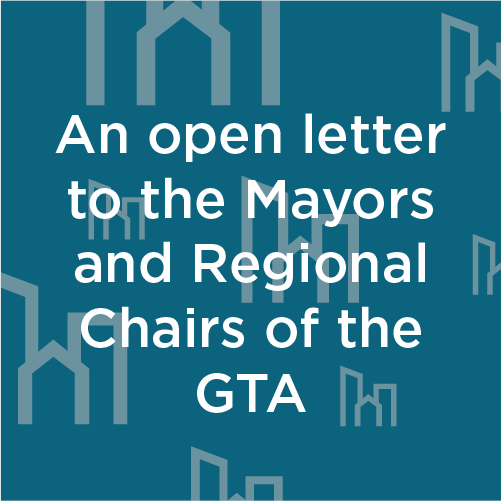Homes For Canada: Building Homes in the GTA Builds Canada’s Economy
The GTA desperately needs more homes to accommodate population growth and restore affordability. In these times of economic and tariff uncertainty, building homes in the Greater Toronto Area (GTA) grows our economy, supports domestic industries from coast to coast, and protects Canadian jobs.
Every year, 80,000 people, mainly young families, leave the GTA for other parts of Ontario and Canada. A key driver of this outmigration is their search to find suitable housing at a cost they can afford. To reverse this trend, we need to increase home building by tens of thousands of units each year. Download the study here.
But, housing construction is not just about building homes – it’s about building our economy. Virtually 100% of the direct employment in the sector is Canadian, and approximately 90% of the materials used in home construction are sourced from within Canada. Building homes in the GTA literally builds our economy.
Now is the time for governments to take action to eliminate the HST on all new homes for all buyers and reduce development charges (municipal charges applied to new homes). Doing so will lower the cost of an average home by up to $200k and provide the housing that families need in the GTA.



1. Eliminate the HST on New Homes
Government fees and taxes comprise 25% of the cost of an average home in the GTA. For instance, with new condominium apartments averaging $1 million and new single-family homes $1.6 million in 2024, this adds between $245,000 to $355,000 to the average new home price tag. This undermines affordability and locks young families out of the GTA housing market.
Of this 25%, a significant portion is from HST – in fact:
Federal:
- At the federal level, the HST amounts has increased dramatically along with home prices. When the Federal GST (now HST) was introduced in 1991, the average Ontario home cost $276,000, and the federal government collected $8,800 in sales tax. By 2023, with the average home priced at $1.023 million, the federal government collects $47,000 in HST—a 435% increase.
- Initially, rebates were offered to offset this tax burden, tailored to 1991 housing prices. However, despite a 270% increase in home prices from 1990 to 2023, rebate thresholds have never been changed. This means that today, practically no new home buyers in the GTA receive a rebate, resulting in the federal government collecting an extra $39,000 per single-family home in HST revenue.
- This situation has yielded billions in additional revenue for the federal government, with Ontario new home buyers alone estimated to have contributed an additional $4 billion.
- As of late March 2025, there have been two welcome but different announcements on exempting new homes from the federal portion of the HST. The Conservative Party of Canada pledge to remove the federal HST from the sale of all new homes under $1.3 million and the Liberal Party of Canada’s announcement to remove the federal HST on the sale of new homes under $1 million for first time buyers.
- These are positive steps, however to be successful in addressing affordability these policies must apply to the largest number of buyers, have price thresholds that are reflective of the GTA market reality and be matched by the provincial government.
Ontario:
- When the HST was first introduced on new homes in Ontario in July 2010, the average price of a new single-family home in the GTA was just $519,000 (compared to $1.63 million in 2024), which meant the provincial government collected only $13,500 in sales tax revenue. In the GTA today, even after the available HST rebate of $24,000 that the province offers, the provincial portion of the HST still adds approximately $93,000 to the cost of a new single family home. This is a 588% increase in tax revenue on a single new home.
- This extra cost is borne directly by new home buyers – and, like the failure of the federal government to index its new home HST rebate thresholds, has significantly eroded the affordability of new homes, particularly for first-time homebuyers and young families.
2. Reduce Development Charges by Modernizing Ontario’s Development Charges Act
Government fees and taxes comprise 25% of the cost of an average home in the GTA and of this 25%, the largest single portion are development charges (DCs) that are added by municipalities and regional governments to pay for new infrastructure and services. Development charges are paid for by builders and developers and then rolled into the final purchase price of a new home.
Over the past decade and a half, DCs in the GTA have increased by an average of 327%, far outpacing inflation and pushing up the overall cost of new homes.
GTA municipal DCs are amongst the highest in North America and on average add $125,000 to the cost of a single-family house and $71,000 to a two-bedroom condo – just one of the fees that municipalities add to new homes.
In the City of Toronto, since 1999, development charges have increased by 6000%. Applying that rate of increase to other goods would mean a $1 cup of coffee in 1999 would cost over $60 today and a $20,000 car in 1999 would cost $1,220,000 today.
DCs play a crucial role in supporting the supply of new homes by funding the necessary infrastructure and services for growth. However, their dramatic increase over the past decade has made it clear that the system is in need of significant reform. The solution to this challenge is twofold: First, immediate short-term relief is essential to address the current burden of excessively high fees and alleviate the immediate pressure on homebuyers. Second, long-term structural change is necessary to create a fair and sustainable system that ensures equity for all. The provincial government is uniquely positioned to act by modernizing Ontario’s Development Charges Act, establishing a system that balances the needs of growth without unfairly burdening new homebuyers.
By updating Ontario’s Development Charges Act, the provincial government can make a number of changes that will reduce DCs by up to 50% and still make sure municipalities have the funds to support growth related infrastructure. These changes include:
- Paying for new water and waste water infrastructure through a utility model rather than putting the costs up front in the cost of a new home, and
- Changing how municipalities are paid for the land they actually acquire for new infrastructure (i.e. pay for what you actually use) vs basing all DC rates on land acquisition assumptions that are never actually realized (what you think you might use but never actually do).
- Please click here to download BILD’s study “The State of Development Charges in Ontario”
There are many steps that the government can and should take to modernize this Act. The results of which would halve DC charges in Ontario, saving new home owners in the GTA $35,500-$62,500 (on average, depending on housing type) – and do so without sacrificing the necessary funding for municipalities.
Fast Facts: The economic and job impact of new home construction in the GTA and Ontario
- Between 2016 and 2021 – the construction industry was the 4th largest sector in Ontario, and the 7th fastest growing sector (out of 24) during this time.
- According to BILD’s 2022 Economic Impact Report, all construction employed 534,000 people across Ontario and 235,000 people in the GTA. Residential is a subset of that.
- Every 1000 multi-family units creates 1,600 jobs (783 direct, 507 in-direct and 316 induced)
- Every 1000 single – family homes creates 4,600 jobs (2,287 direct, 1,441 in-direct and 898 induced)

Latest News
- Building Industry reports worst February on record for new home sales in the GTA
- GTA must increase rate of building and adjust housing mix to accommodate demographic shifts
- New National Housing Study Reinforces that GTA Municipalities have Significant Opportunities for Improvement
- GTA new home sales remain low in January – but with prices down and inventory up, buyers have a unique opportunity in the months ahead
- BILD applauds the City of Mississauga for reducing development charges and other measures to increase new housing construction





